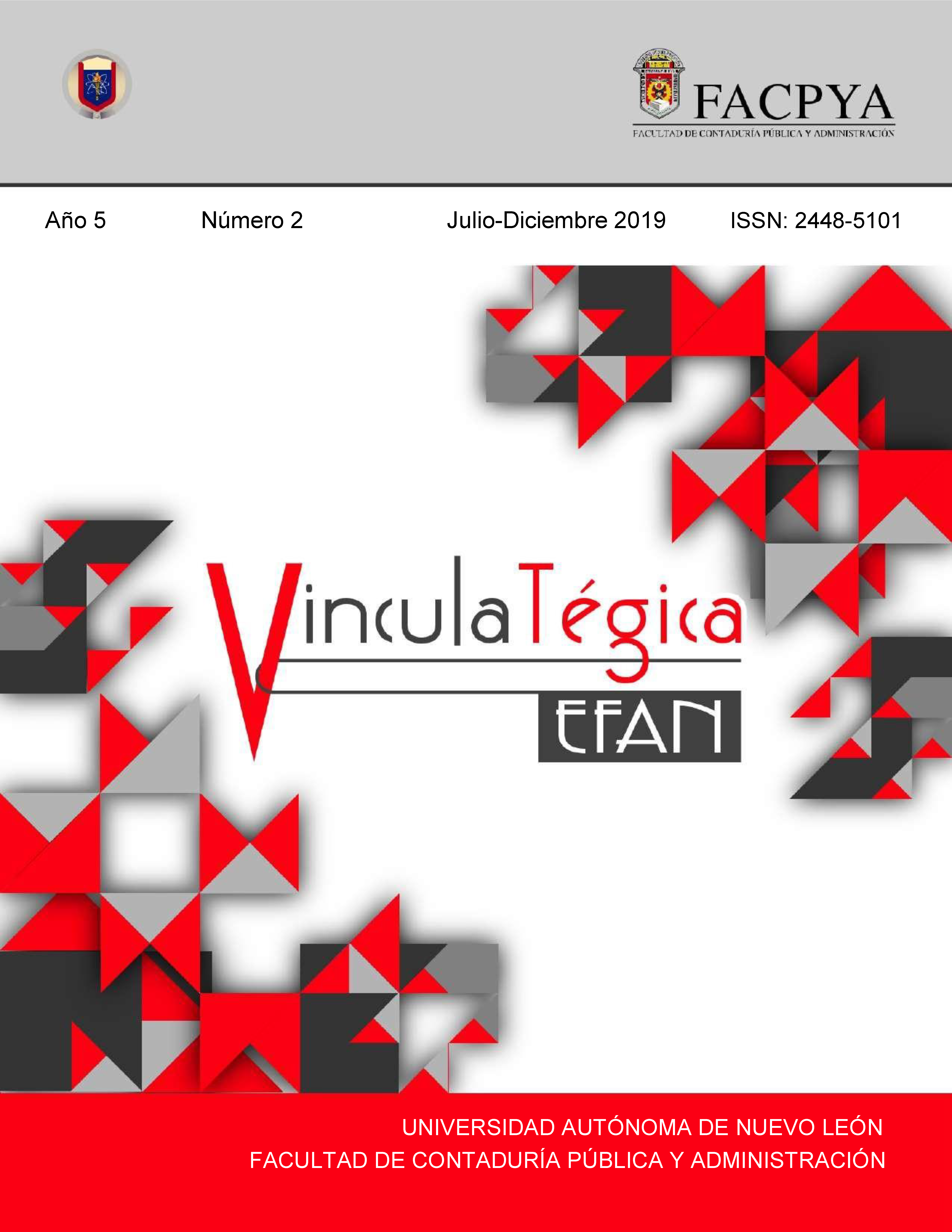Factores que influyen en la implementación del Hacking ético en una organización
DOI:
https://doi.org/10.29105/vtga5.2-706Keywords:
hacking etico, organizacion, implementacionAbstract
Information and Communication Technologies are increasingly used in organizations, which bring many benefits, but at the same time bring with them imminent risks that the manager of an organization must contemplate to ensure the protection of its information. The purpose of this paper is to know the variables that the administrator of an organization must consider for the successful implementation of ethical hacking, in order to create an instrument based on the opinion of experts in information technology using the Delphi Method. A model is proposed that considers knowledge and experience, resources and infrastructure, the Hacker's ethics and the administration's commitment; in addition, a non-probabilistic sampling was carried out where it was confirmed that this instrument is relevant for the object of study.
Downloads
References
Bissett, A., (2003). Hacker ethics in the marketplace: the example of freeware. Journal of Information, Communication and Ethics in Society. 1(1), 31-38. https://doi.org/10.1108/14779960380000224 DOI: https://doi.org/10.1108/14779960380000224
Cabero, J., e Infante, A. (2014). Empleo del método Delphi y su empleo en la investigación en Comunicación y Educación. EDUTEC Revista Electrónica de Investigación Educativa, 48, 1-16. Recuperado de: http://edutec.rediris.es/Revelec2/Revelec48/pdf/Edutec- e_n48_CaberoInfante.pdf
CONDUSEF. (s.f.). Condusef estadísticas. Recuperado de https://www.condusef.gob.mx/gbmx/?p=estadisticas
Díaz, M. A., (2017). Framework para la entrega de Reportes de Test de Penetración a Aplicaciones Web (tesis de pregrado). Universidad Técnica Federico Santa María, Chile.
Enter.co. (2014). Enter.co. Recuperado de: https://www.enter.co/guias/tecnoguias-para-empresas/que-esel-hacking-etico-y-por-que-es-necesario/
Gacharná G., F. (2009). Hacker ético vs delincuente informático: Una mirada en el contexto colombiano. INVENTUM, 4(6), 46-49. doi.org/10.26620/uniminuto.inventum.4.6.2009.46-49 DOI: https://doi.org/10.26620/uniminuto.inventum.4.6.2009.46-49
Giannone, A., Martins, S., Amatriain, H. G., Rodríguez, D., & Merlino, H. (2018). Inclusión de hacking ético en el proceso de testing de software. In XX Workshop de Investigadores en Ciencias de la Computación (WICC 2018, Universidad Nacional del Nordeste). DOI: https://doi.org/10.18294/relais.2016.252-254
Gil, V., & Gil, J. (2017). Seguridad informática organizacional: un modelo de simulación basado en dinámica de sistemas. Scientia Et Technica, 22 (2), 193-197. DOI: https://doi.org/10.22517/23447214.11371
Gómez A. V. (2014) Tipos de ataques y de intrusos en las redes informáticas. Recolectado de http://www.edisa.com/wpcontent/uploads/2014/08/Ponencia_Tipos_de_ataques_y_de_intrusos_en_las_redes_informaticas. pdf. Marzo 2018.
Guevara, A. (7 junio de 2012). El hacking ético y la seguridad de la información de empresas en México - parte ii. Revista Seguridad, 13(31). Recuperado de https://revista.seguridad.unam.mx/numero13/el-hacking-%C3%A9tico-y-la-seguridad-de-la-informaci%C3%B3n-de-empresas-enm%C3%A9xico-parte-ii
Hernández, R., Fernández, C., & Baptista, P. (2010). Metodología de la investigación. México: McGrawHill.
Himanen, P. (2002). La ética del hacker y el espíritu de la era de la información., UNSPECIFIED. [Book]
Hurtado, M., & Mendaño, L. (2016). Implementación de técnicas de hacking ético para el descubrimiento y evaluación de vulnerabilidades de la red de una cartera de Estado. Ecuador: Quito
Johansen, R. (March 4, 2017). Ethical Hacking Code of Ethics: Security, Risk & Issues. EUA: Panmore Institute. Recuperado de: http://panmore.com/ethical-hacking-code-of-ethics-security-risk-issues
Lledó, P., & Rivarola, G. (2007). Gestión de proyectos. Buenos Aires, Argentina: Pearson Educación.
Muñoz, A., & Sánchez, J. (2017). Modelo referencial de aprendizaje para la implementación de Hacking ético (trabajo de grado). Universidad Libre de Colombia, Bogotá.
Ortega, O. (11 de abril de 2018). ¿Un hacker para tu empresa? Podría ser una buena idea. El Financiero. Recuperado de: https://www.elfinanciero.com.mx/tech/un-hacker-para-tu-empresa-podria-seruna-buena-idea
Parodi, A. (2018). ¿Qué conocimientos necesita tener un buen hacker? Quora. Recuperado de https://es.quora.com/Qué-conocimientos-necesita-tener-un-buen-hacker
Pixel, M. (2018). Con más de un millón de casos en 2018, los fraudes cibernéticos ya superaron a las estafas y clonaciones de tarjetas en México. México: Xataka. Recuperado de https://www.xataka.com.mx/seguridad/millon-casos-2018-fraudes-ciberneticos-superaronestafas-clonaciones-tarjetas-mexico
Risen, T. (2014). Not Prepared for Hacks. U.S. News Digital Weekly, 6(22), 8. Retrieved from http://search.ebscohost.com/login.aspx?direct=true&AuthType=ip,url,uid,cookie&db=a9h&AN= 96273523&lang=es&site=ehost-live
Rodríguez, E. R. (2016). Proceso de auditoría interna y Ethical Universidad Piloto de Colombia).
Ruales, C., (2016). Auditoría de Seguridad Perimetral en Dispositivos de capa 3 para entornos empresariales utilizando la herramienta Kali Linux (tesis de doctoral), Universidad de Guayaquil Facultad de Ciencias Matemáticas y Físicas Carrera de Ingeniería en Networking y Telecomunicaciones, Ecuador. 843
Saavedra, M., & Tapia, B. (2013). El uso de las tecnologías de información y comunicación TIC en las micro, pequeñas y medianas empresas (MIPyME) industriales mexicanas, Revista Venezolana de Información, Tecnología y Conocimiento, 10(1), 85-104.
Stephen, L. (2000) "Information technology in business processes". Business Process Management Journal, 6(3), pp.224-237. doi.org/10.1108/14637150010325444. DOI: https://doi.org/10.1108/14637150010325444
Velasco, R. (2019). Las mejores herramientas para hacking ético y analizar redes Wi-fi. Softzone. Recuperado de:https://www.softzone.es/2018/01/12/mejores-herramientas-hacking-etico-2018/
Vidal, J. H. (2017). Una nueva experiencia en seguridad hacking ético. (Trabajo de grado). Universidad Militar Nueva Granada, Colombia.
Downloads
Published
How to Cite
Issue
Section
License

This work is licensed under a Creative Commons Attribution 4.0 International License.
a). Authors keep copyright and give the journal the right of the first publication of the work under a Creative Commons attribution license. This license allows others to share the work as long as original authorship and initial publication in this journal is acknowledged.
b). Authors may make other independent and additional contractual agreements for the non-exclusive distribution of the version of the article published in this journal (e.g., include it in an institutional repository or publish it in a book) as long as they clearly indicate that the work was published for the first time in this journal.







